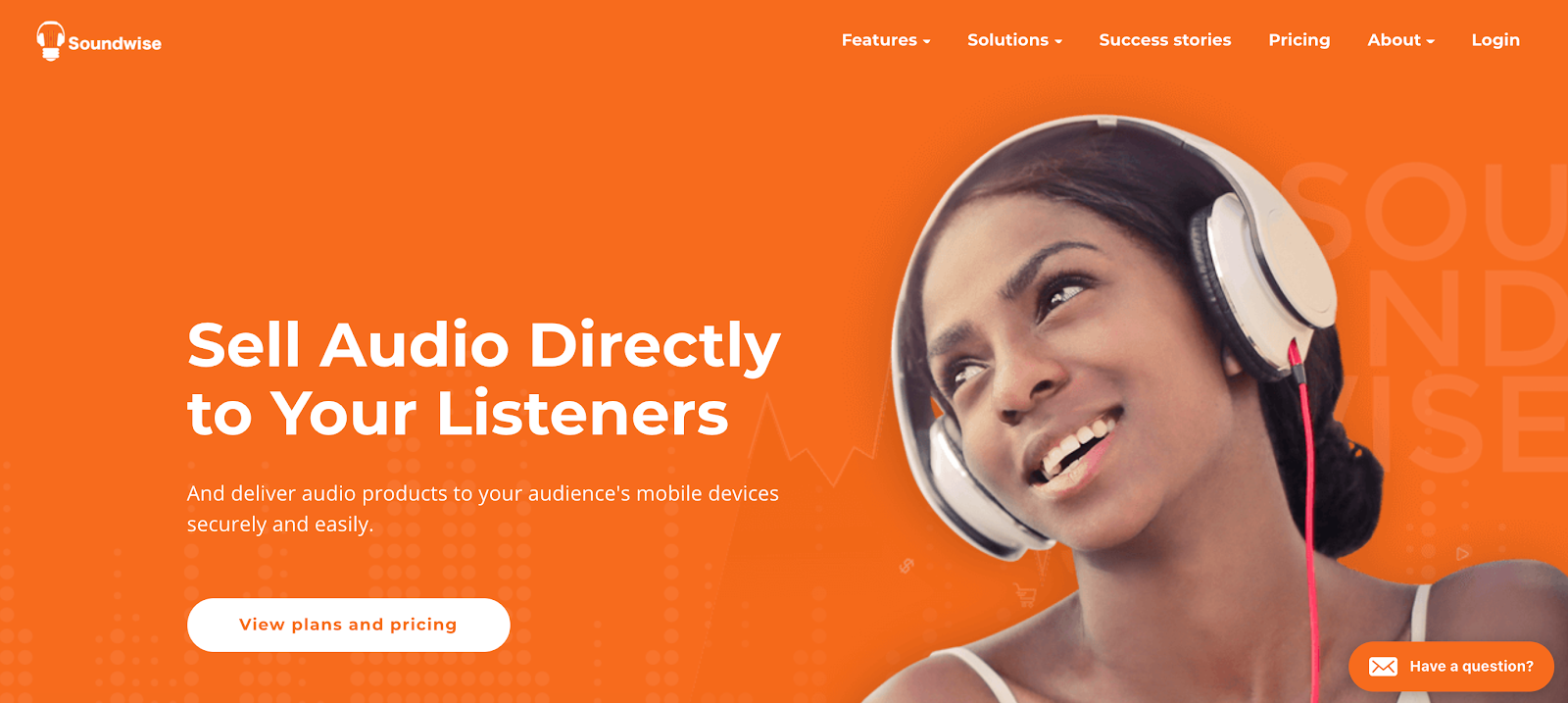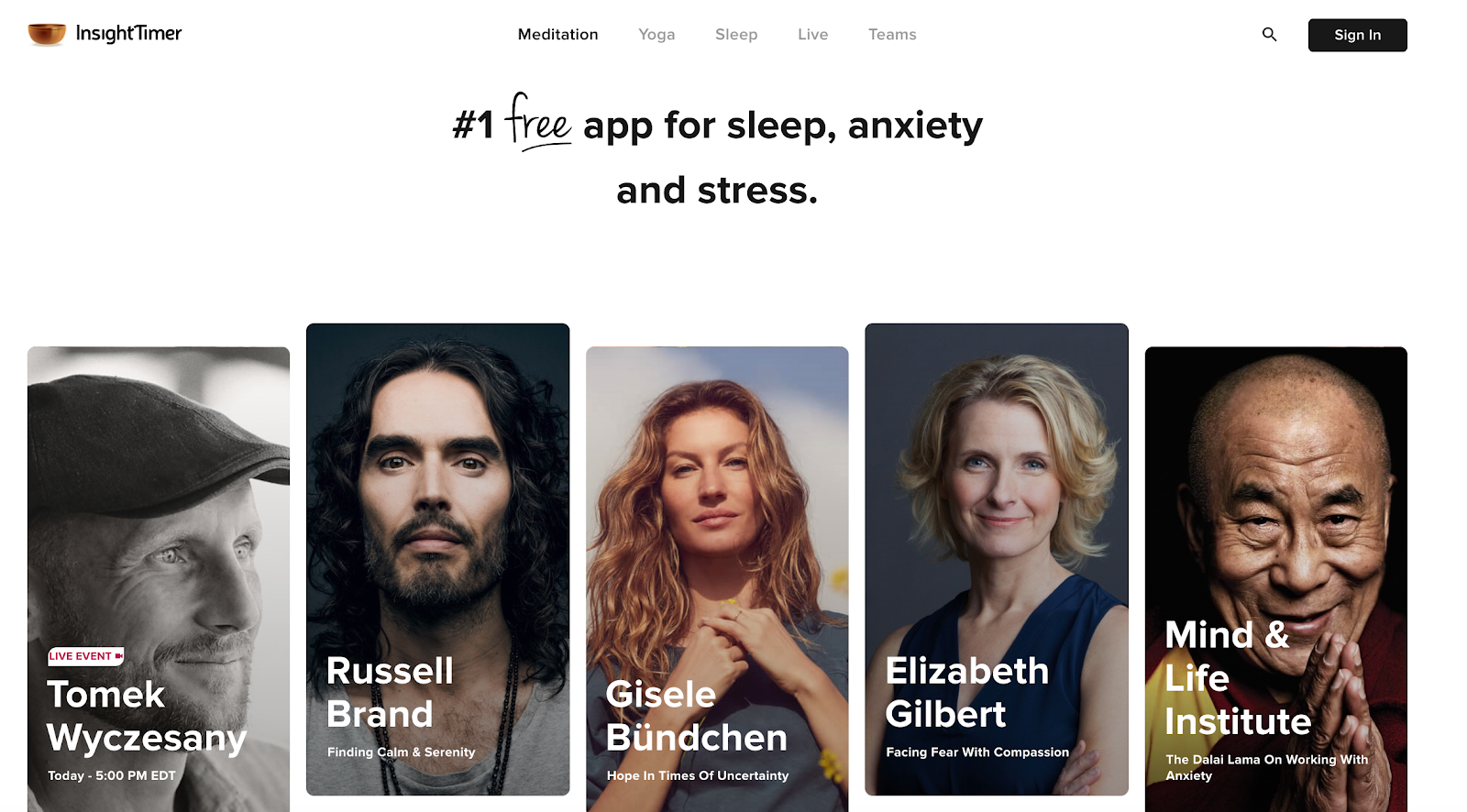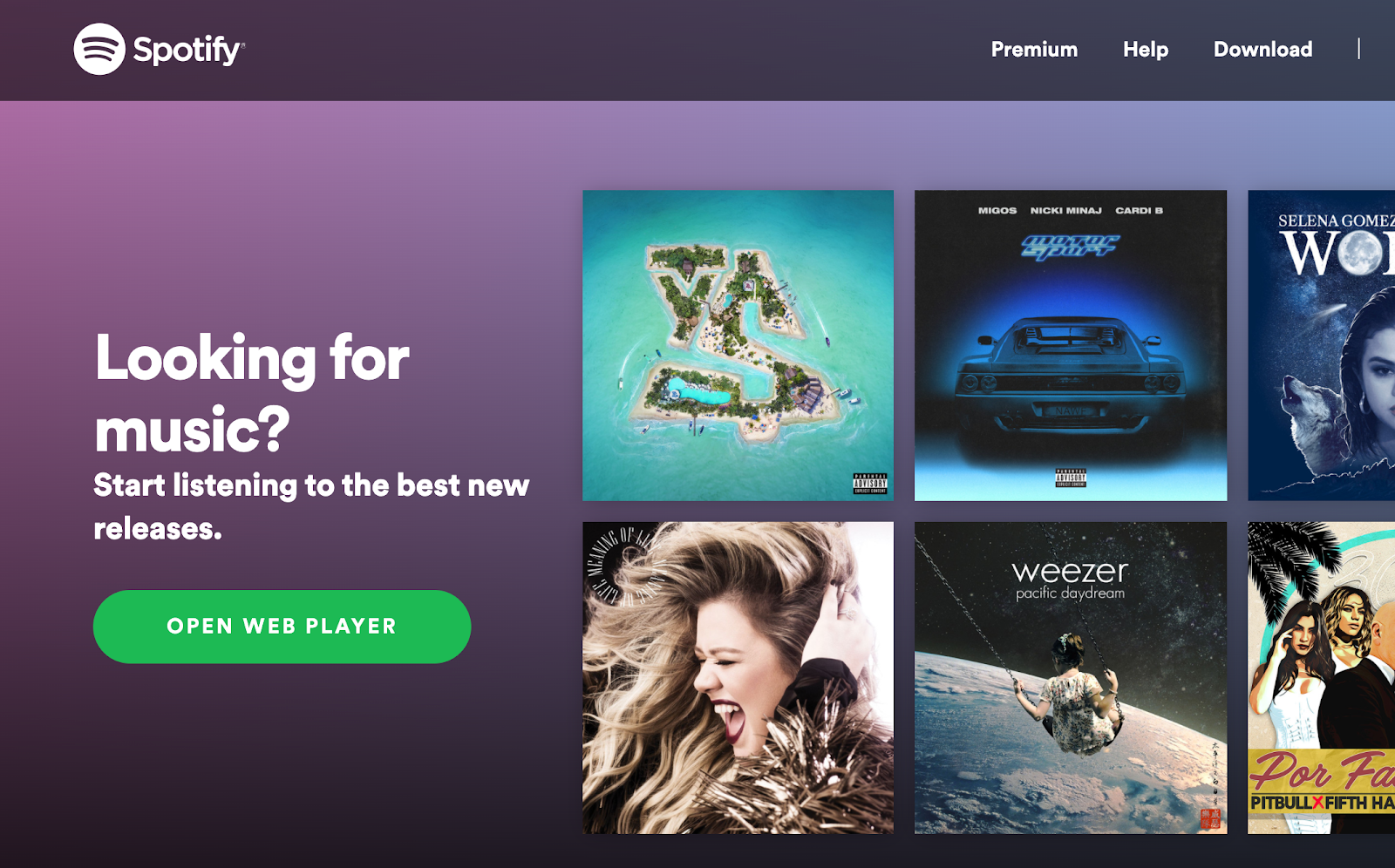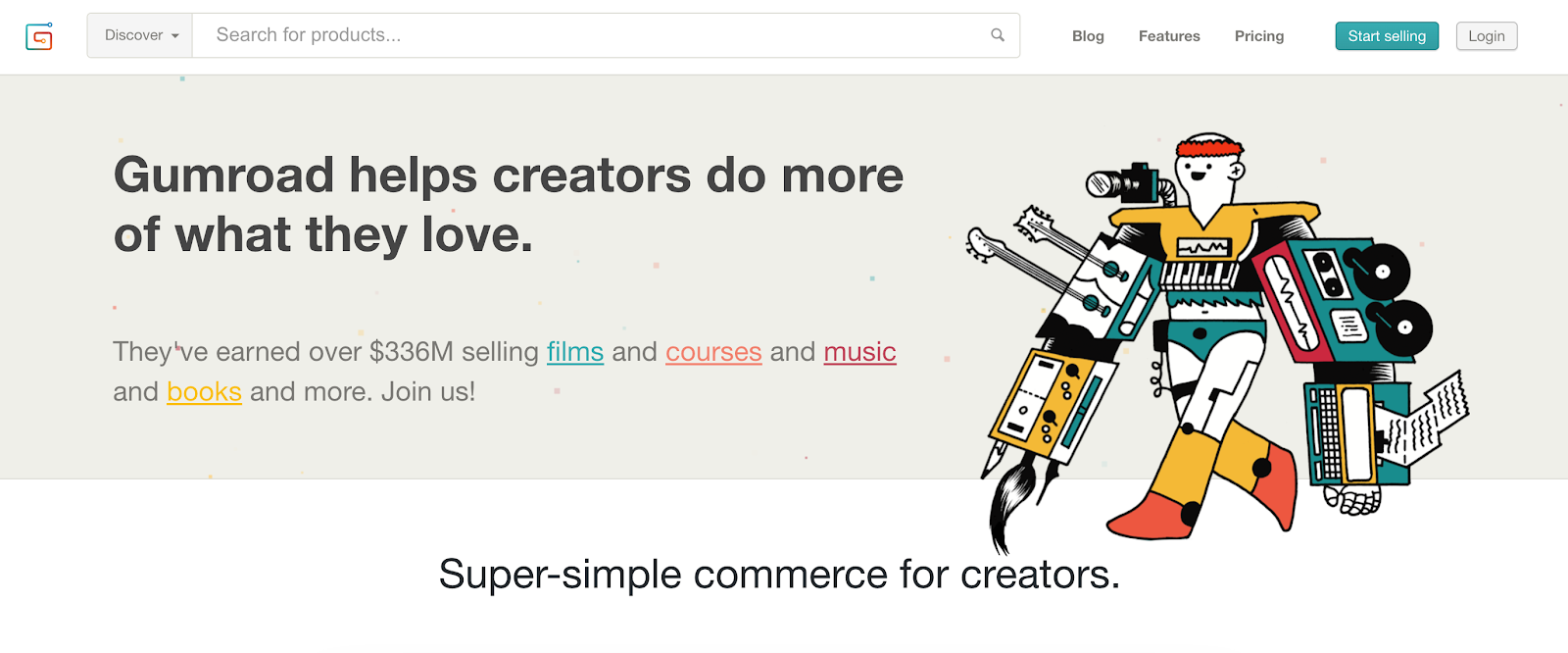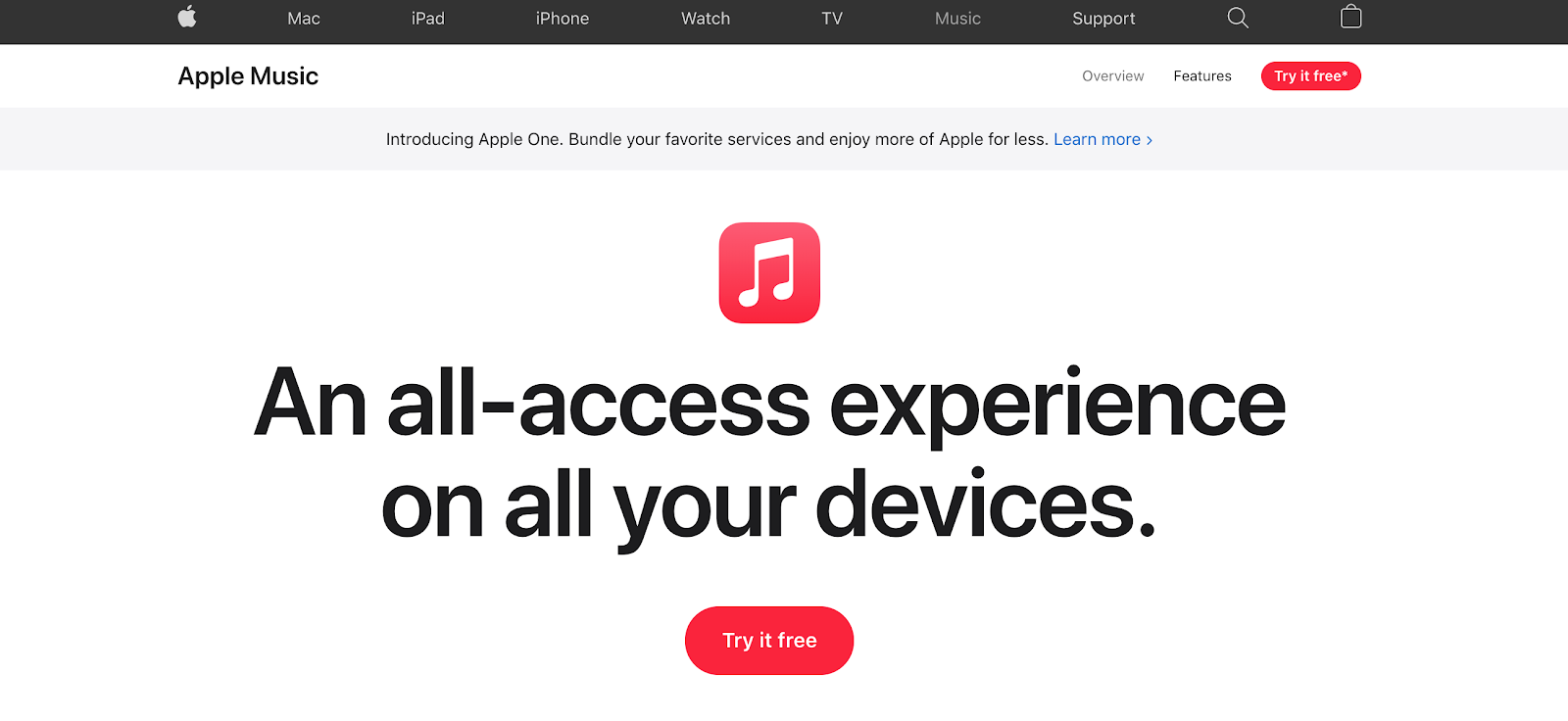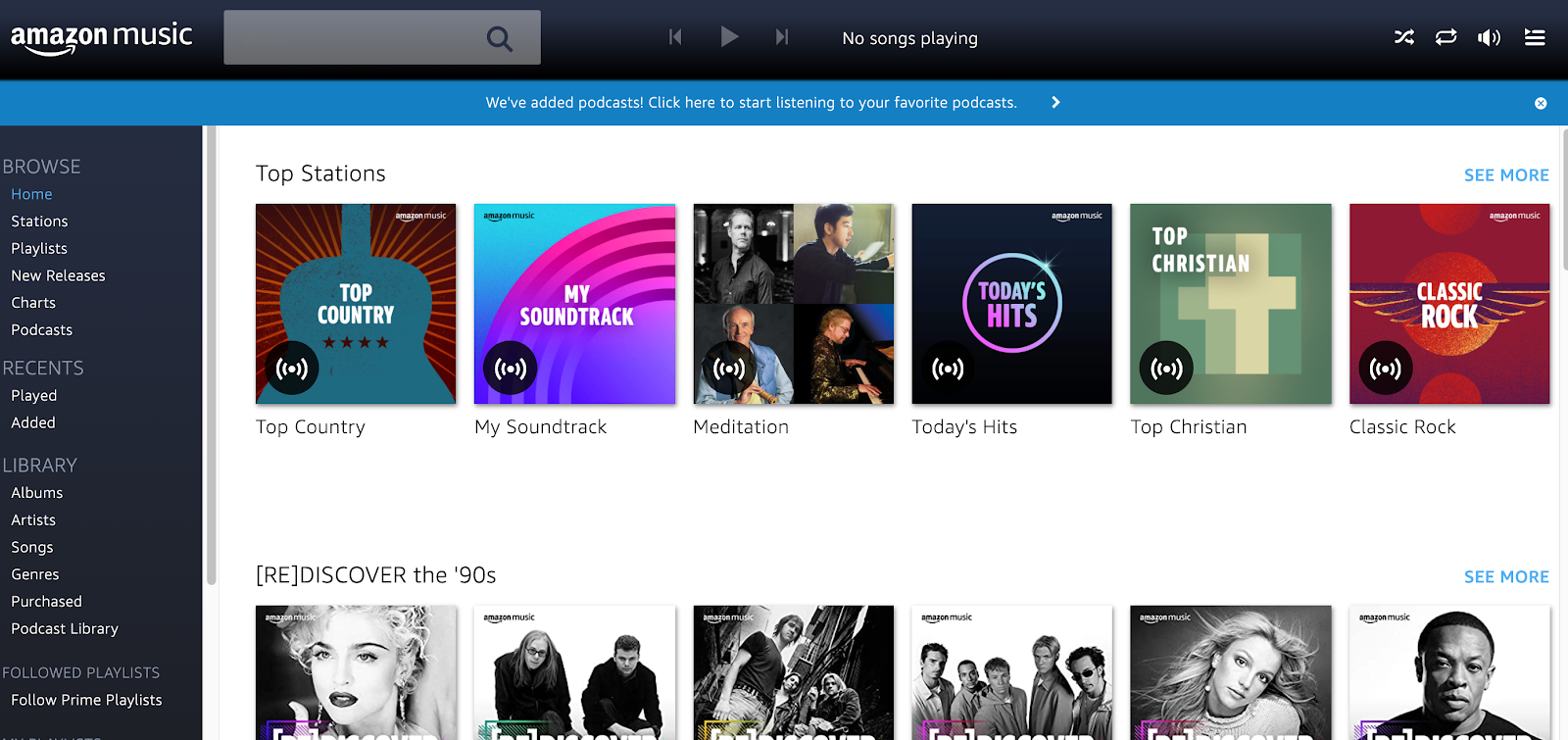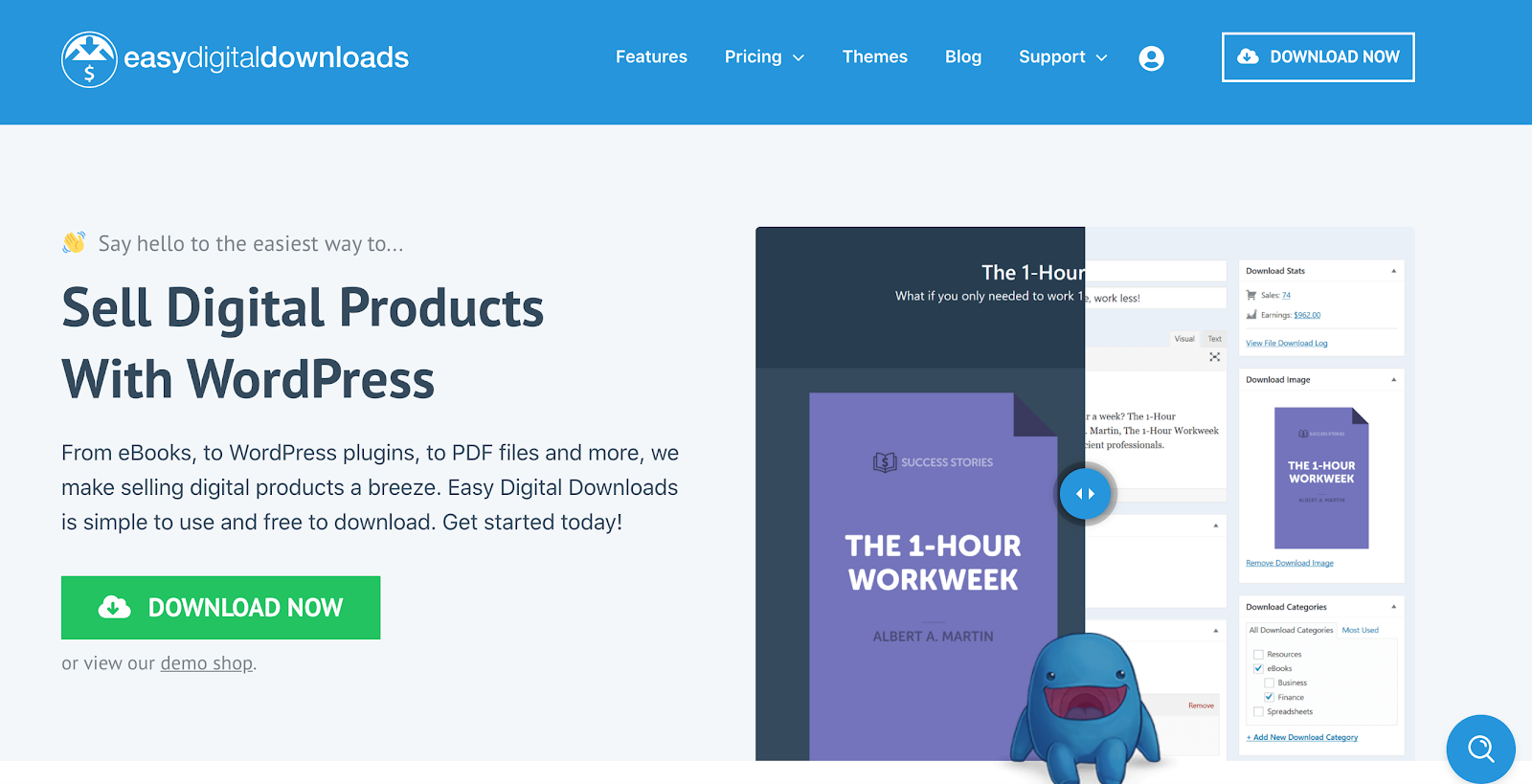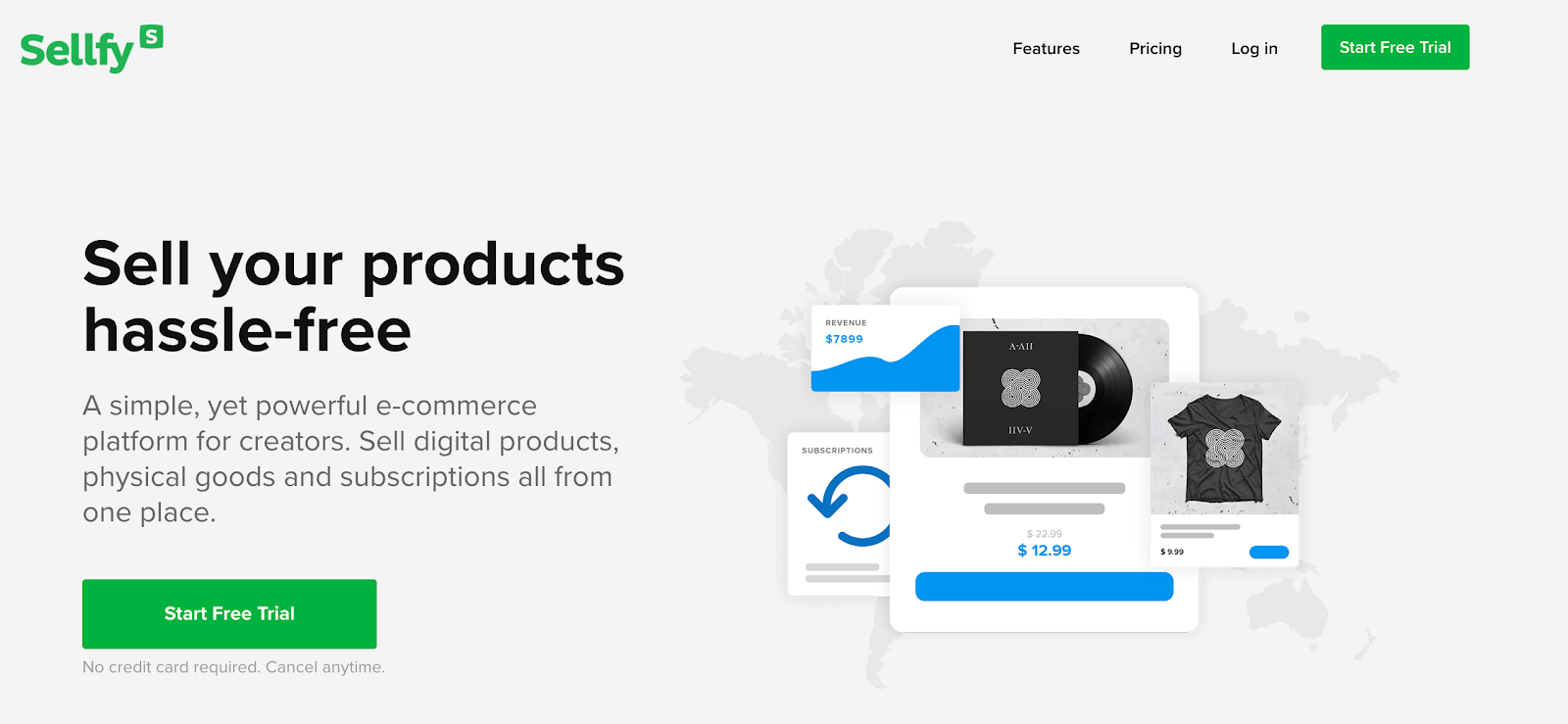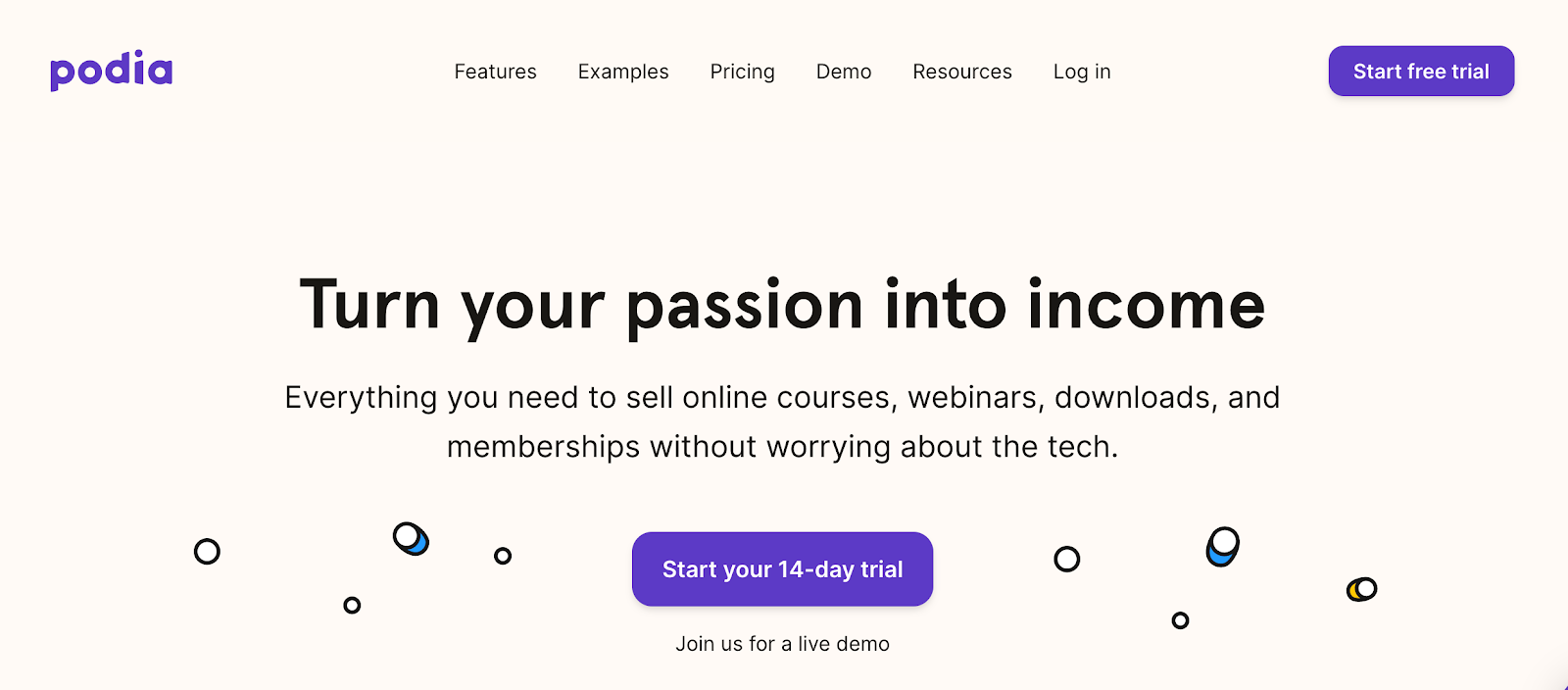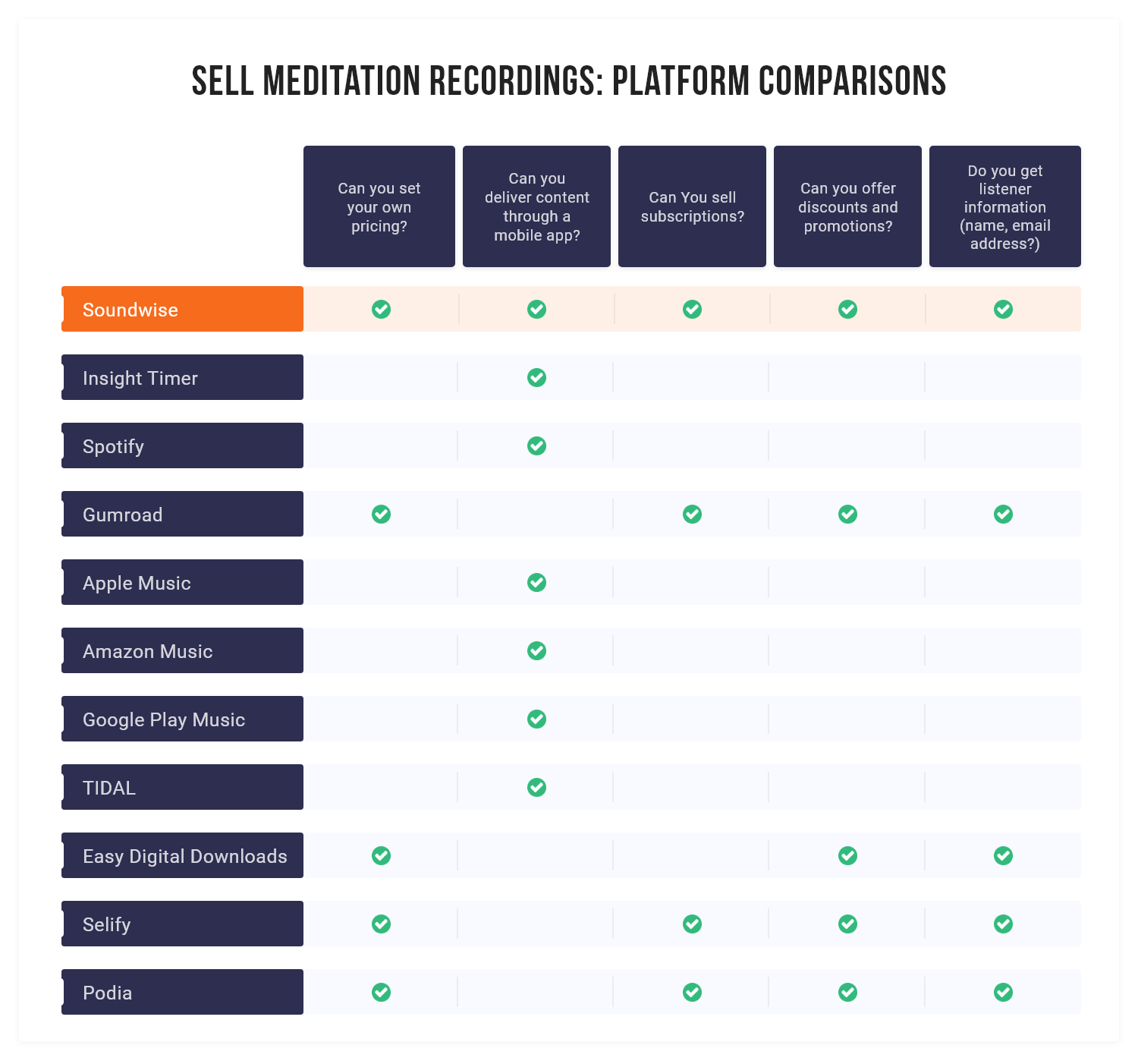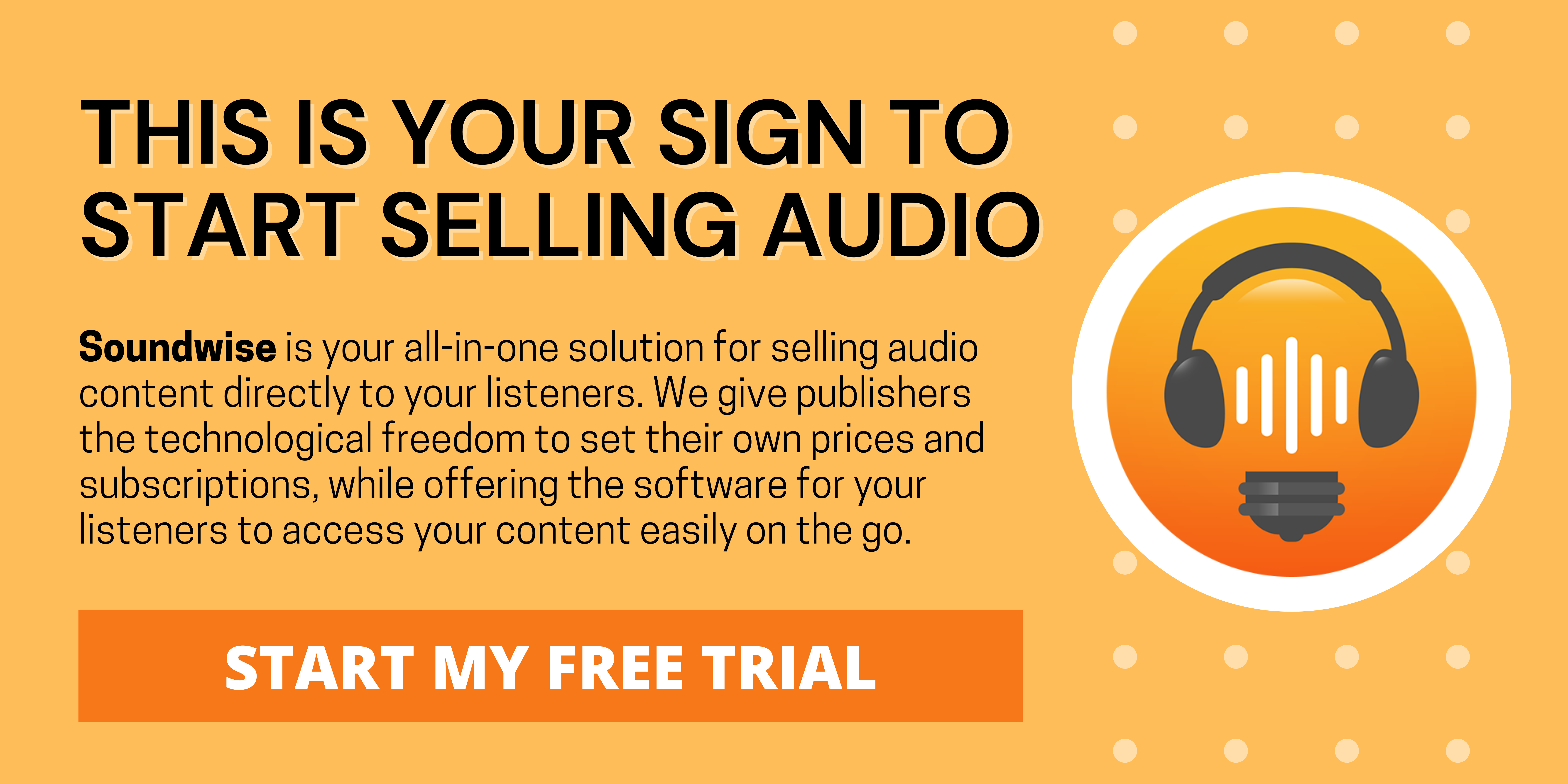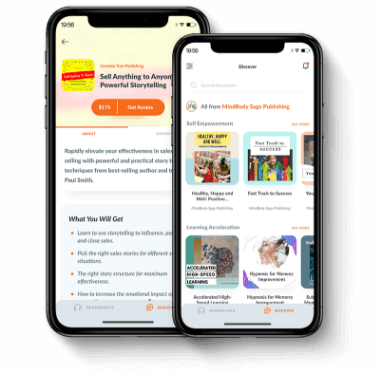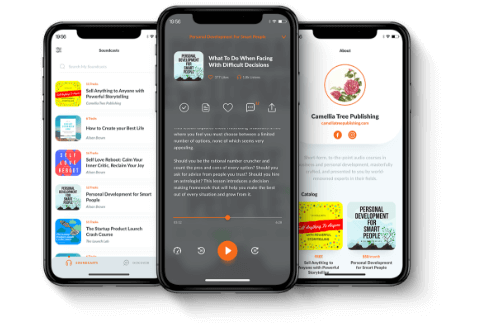It’s no surprise that in this hectic day and age, more and more people are looking for easy ways to destress and unwind. The self-care market is booming, and last year, the top 10 meditation apps alone grossed a whopping $159 million. If you’re a creator of guided meditation recordings – and if you’re reading this, you probably are – we have great news: there has never been a better time to sell your content online.
However, navigating platforms for audio content creators can be confusing and overwhelming. With so many options, how do you know which one is right to choose? Luckily, our guide breaks down the pros and cons of 11 places to sell meditation recordings online, so you can spend less time worrying and more time creating.
1. Soundwise
What is it?
Soundwise (that’s us!) is a direct-to-consumer audio publishing platform for the modern generation. We help independent creators publish, sell, and deliver audio content directly to their audiences through our functional and elegant app.
How does it work?
Creators upload their meditations directly to their Soundwise dashboard and customize their own landing pages. Listeners can then purchase content and listen on either their desktop or mobile app. You’re in total control: you can set your own prices, offer special discounts and promotional free content, and even engage with your audience through our comment and message features. We also offer detailed analytics, and each individual user’s name and email address, so you can have a deeper understanding of your own unique audience and build your email list as well.
How much does it cost?
We offer four tiers of membership, billed either monthly or annually. Then...that’s pretty much it! We don’t take a transaction fee or commission on any audio product sales for Pro and Platinum accounts. For more information on Pricing, see here.
Pros:
- Little-to-no revenue share. You keep what you earn!
- Creators have control over their own prices, promotions, subscriptions, and bundles.
- A functional, effective mobile app for on-the-go listeners.
- Quick customer support.
- Detailed audience analytics, listener names, and email addresses.
- Interactive comment, message, and PDF upload features.
- Nearly immediate payment via Stripe.
Cons:
- No third-party distribution to streaming services like Spotify or Apple Music.
- Listeners must create an account to stream on the app.
2. Insight Timer
What is it?
Insight Timer is the leading free meditation app. It hosts audio content from creators of all kinds, from little-known gurus to major celebrities. Out of all meditation apps, American users spend the majority of their time – 63%! – on Insight Timer.
How does it work?
Anyone can make a free Publisher account and upload guided meditations to Insight Timer. Revenue is calculated by overall user subscriptions on the Insight Timer platform – you don’t set individual prices or subscriptions for your content.
How much does it cost?
While Insight Timer is free for Publishers, earnings are very low unless you’re a major creator. Insight Timer takes 50% of all subscription income, then allocates the rest to teachers depending on metrics: total play count (75%) and teacher engagement (25%). So, you’re competing with other teachers for your income. You can also collect revenue through donations, though Insight Timer takes 20% of earnings. Teachers are paid every 30 days if revenue is over $10. More information on earnings can be found here.
Pros:
- Functional mobile app.
- Large user base and name recognition
- No sign-up cost.
- Interactive features for audience engagement.
Cons:
- Revenue structure and large fees make it difficult to earn if you’re not a major creator.
- Can’t set own prices, promotions, subscriptions, or bundles.
- Must wait 30 days between payments.
- Can’t see personalized audience information.
3. Spotify
What is it?
Spotify is the largest music streaming platform in the world, with 286 million monthly users. After making a name for themselves in the music industry, they’ve recently branched out into the podcast and meditation fields.
How does it work?
In order to be paid on Spotify, you must upload your content as a music creator. If you upload your content as a podcaster, you won’t be paid. This means you must use a third-party distributor like TuneCore or DistroKid to upload your guided meditation audio files and metadata. These distributors will compile your files into an album then distribute it to platforms for users to stream.
How much does it cost?
While Spotify is free for creators, third-party aggregators vary in their costs and fees. Most of these aggregators will distribute your content to many streaming platforms, so you’ll have to research the costs and options depending on your needs.
As for revenue, Spotify is notorious for paying low rates to its artists and creators. Rates are around $0.003 to $0.005 per stream.
Pros:
- Functional mobile app.
- Large user base and name recognition
- No sign-up cost.
Cons:
- Very low pay rate per stream.
- Can’t set own prices, promotions, subscriptions, or bundles.
- No interactive features for audience engagement.
- You don’t get any audience information.
4. Gumroad
What is it?
Like Soundwise, Gumroad is a direct-to-consumer selling tool. It offers a personalized landing page, detailed analytics, and tools for audience management and customer engagement. However, there isn’t a mobile app, so all transactions are desktop-only.
How does it work?
After making an account, creators can create their own landing pages, upload their own audio files, and set their own prices and promotions. Customers don’t need to make a Gumroad account to buy your meditations. For more information, see here.
How much does it cost?
With Gumroad’s free subscription, you get more limited features and a fee of 8.5% + $0.30 on every sale. For a premium account, you’ll pay $10/month and a 3.5% + $0.30 fee on every sale.
Pros:
- Creators have control over their own prices, promotions, subscriptions, and bundles.
- Detailed audience analytics.
- Interactive features for audience engagement.
- Low monthly subscription cost for creators.
Cons:
- No mobile app. Studies show that most audio listening happens on mobile devices, so having an on-the-go feature is critical for most listeners.
- Charges a fee on every sale.
5. Apple Music, Amazon Music, Google Play Music, and Tidal
What is it?
When it comes to audio streaming, there are no shortage of options to choose from. In addition to Spotify, you can upload your guided meditations to Apple Music, Amazon Music, Google Play Music, and Tidal. They all offer similar features, pros, and cons, so we’ve grouped them together for the purpose of this list.
How does it work?
Like Spotify, you’ll have to use a third-party distributor to upload your guided meditation audio files and compile them into an “album.” Then, these distributors will distribute your album across platforms, so users can find and stream your content.
How much does it cost?
While these platforms are free for creators, third-party aggregators vary in their costs and fees. You can’t set your own prices or subscriptions, because you’re simply paid per stream. Tidal is known for having some of the highest per-stream rates of the streaming platforms – you can expect to make about $0.0125 per listen, which is still quite low.
Pros:
- Functional mobile applications.
- Large user bases and name recognition.
- No sign-up costs.
Cons:
- Very low pay rate per stream.
- Can’t set own prices, promotions, subscriptions, or bundles.
- No interactive features for audience engagement.
- More well-known for music streaming, not as popular for meditations.
- You don’t get any listener information.
6. Easy Digital Downloads
What is it?
Easy Digital Downloads is a plug-in for WordPress that allows direct-to-consumer sales of files, including audio content. It also enables discount codes, customer management, and data reporting. It’s less of a platform, and more of a shopping cart tool that can be used with a pre-existing WordPress Business account.
How does it work?
You have to have a WordPress website with a Business-level premium account to use Easy Digital Downloads. Then, you can upload your meditations and set your rates. Users don’t need to have an account to make purchases.
How much does it cost?
There are four levels of pricing, ranging from $99 - $499 per year. In addition, you’ll need a WordPress Business account, which is $25 per month, billed annually. You keep 100% of your proceeds from audio downloads
Pros:
- Creators have control over their own prices, promotions, subscriptions, and bundles.
- Audience analytics.
- No fees on sales.
- Variety of customizable extensions.
Cons:
- No mobile app. Studies show that most podcast listening happens on mobile devices, so having an on-the-go feature is critical for most users.
- No interactive features.
- Must have a WordPress account.
- Only an extension, not its own platform.
- Only pay-per-download, no way to sell subscriptions.
7. Sellfy and Podia
What is it?
Sellfy and Podia are both direct-to-consumer e-commerce platforms. Unlike Easy Digital Downloads, they give creators the ability to offer both individual downloads and subscriptions.
How does it work?
Creators can build and customize their own storefronts and link them to their domains or
social media accounts. Consumers can then purchase your meditations directly.
How much does it cost?
Both platforms have 0% transaction fees and instead opt for monthly subscription costs. Sellfy’s prices range from $19/month to $89/month. Podia has two tiers: $39/month or $79/month.
Pros:
- Creators have control over their own prices, promotions, subscriptions, and bundles.
- Audience analytics.
- No fees on sales.
- Podia offers additional perks like Zoom integration and email marketing.
Cons:
- No mobile app. Studies show that most podcast listening happens on mobile devices, so having an on-the-go feature is critical for most users.
- Not popular choices for guided meditation downloads. For example, Podia is heavily geared towards online courses and webinars.
Conclusion
If you’re wondering where to sell meditation recordings online, the answer is clear: Soundwise offers guided meditation creators an unparalleled combination of high flexibility, low fees, and seamless mobile delivery. Not convinced? Check out our Success Stories page to learn why other creators have chosen Soundwise as their go-to audio delivery platform.




